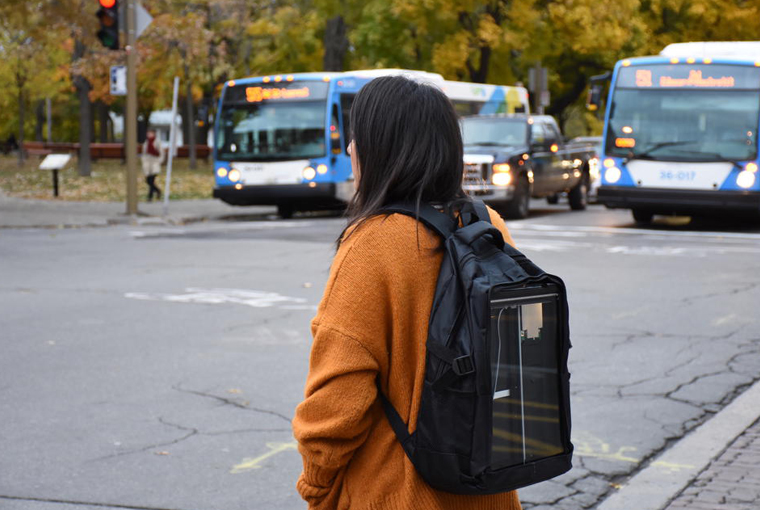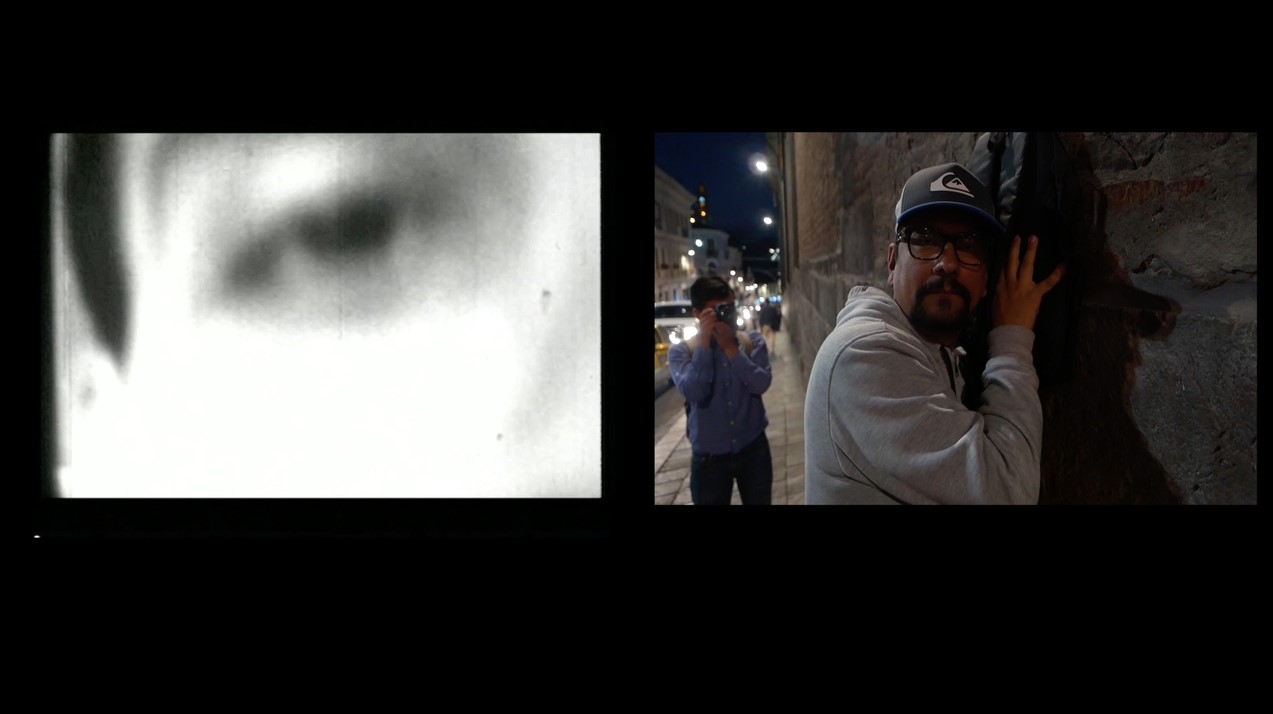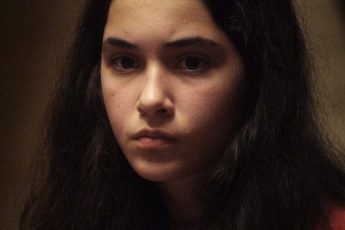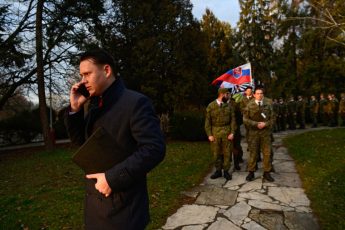Hacking the Default: Subversive Practices for a Viewfinder
Mihovil Pansini’s Scusa Signorina (1963) & Karla Tobar’s <scanner_pack> project (2017)
Vol. 87 (September 2018) by Karla Tobar
For nearly two hundred years the camera stood as a sovereign metaphor for describing the status of an observer and as a model, in both rationalist and empiricist thought, of how observation leads to truthful inferences about the world.”
– Jonathan Crary, 1988
In this piece of writing I would like to share my meeting with Mihovil Pansini’s Scusa Signorina and the complementary study of the city in both works involving a process in which the image is liberated by destabilizing the logic of our recording devices.
Context and invitation
I created my video dialog with Mihovil Pansini upon an invitation by Miriam de Rosa, who contacted me by email after seeing my piece at the NECS conference in Potsdam, 2016. She wanted to invite me to be part of an exhibition called Subversiji ne treba verovati / Don’t believe in subversion that she was curating with Greg de Cuir Jr. at the Academic Film Center (AFC Belgrade). They wanted to explore the idea of subversion and exhibit a selection of works ranging from literature in the field of experimental film theories to analog films and digital experimental works. She thought my work fitted the latter category as both Pansini´s camera and my scanner were placed in a similar position, and she thought that, in essence, it is a relevant aspect to conceptually create a linkage that represented an act of subversion in both cases. She remembered that I had shown a video of the project recorded in NYC and asked me if there was another one of that same action available for exhibition.
By the time I received her email I had just finished collaborating with another artist on the <scanner-pack>project in Wroclaw, Poland and I replied that it was possible to edit a cut of the video in NYC but that the project had developed several collaborations in many other cities and that I had many hours of video that could be interesting to consider too. I offered to edit a short video with some of those files.
To this, she replied with a proposal to create a dialog between my <scanner-pack> video archive and an avant-garde film of the ex-Yugoslav area by Mihovil Pansini, entitled “Scusa Signorina”. She told me about how Pansini explored the perception of space by wearing the camera on his back while walking around the city, and that although she knows my work has a different outcome, she believed both concepts are suitable for a comparative reading. She also told me that his film is roughly 7′ long and asked me to make a cut of the same running time.
I accepted the proposal.
This invitation to create a visual dialog of about 7 minutes with Mihovil Pansini’s film work was an honor and an opportunity for researching some new theories within the boundaries of filmmaking, which Pansini had helped champion. Pansini stated the principles of experimental practices through his antifilm manifesto, leading members of KinoKlub Zagreb and other intellectuals of his period, to a series of proposals and discussions on these subjects. Scusa Signorina challenged the logics of camerawork through the use of subjectivity in the experimental forms; it is focused on the annihilation of authorship and questions conventional structures in cinematography by subverting the logic in the point of view and altering the default use of his filming device.
I believe that the connection to my work was made considering that it proposes a resistance to planned obsolescence in technological devices by subverting its economical value into an asset of discarded devices. I created a platform that could provoke other dynamics of producing images, one in which there is not an author but a group of authors, and where the image is not constructed through the constraints of the device but through the embrace of a walker with a DIY scanning gear over architectural surfaces.
Camera, scanner and filmmaker´s body
 Frame from (min.03:33) dialog between Scusa Signorina (1963,16mm transferred to video, collection HFS Zagreb) and <scanner-pack>project (2017, 7 min, video)
Frame from (min.03:33) dialog between Scusa Signorina (1963,16mm transferred to video, collection HFS Zagreb) and <scanner-pack>project (2017, 7 min, video)
When I began working with Scusa Signorina, I started out by looking carefully at the title, the Kino Klub Zagreb logo, the soundtrack, the black transitions, the city and especially at Pansini’s face, which was revealed for a few seconds as he raised the camera up to his face before mounting it on his back. This last gesture caught my attention immediately as it raised practical and conceptual inquiries about what could have happened that day, but most importantly it was the only proof from which I could conclude that it was Pansini alone witnessing and performing the action. This meant that in order to connect over time with his antifilm I had to start by studying the walkers and cameramen of my <scanner-pack>project.
The <scanner-pack> project began in Bilbao, 2016 and finished this March in Guadalajara, Mexico with the participation of a total of fourteen artists. It is a collaborative artwork that has produced scanned images, sound and video files registering a series of actions executed at different moments and across nine different cities during a one-hour walk using the <scanner-pack> kit. This DIY scanning gear includes an obsolete scanner, a Raspberry pi, a portable battery charger, a GPS module and an antenna fitted in a black rucksack. It is part of a practice-based research project regarding planned obsolescence and its potential to destabilize the orders of artistic production in hybrid artworks that trigger unconventional dynamics of digital aesthetics involving the use of, and interaction with, media technologies.
The artists/walkers participating in this artwork activate the <scanner_pack> through its contact with different urban surfaces, archiving geolocation data and collecting digitally distorted prints of that experience. Together with the artist/walker comes an artist/ cameraman witnessing the event and recording the scanning process in video.
The cameraman following the action behind the walker is only traceable through the focus and non-stop recording of the scene.
Going back to the study process of Scusa Signorina and after making minute 03:33 the starting link for the dialog, I began to reconstruct his film through my video archive. I watched and rewound the antifilm several times while trying to interpret the movements of Pansini´s body towards the camera and his knowledge of what he could do with this object on his back. I imagined him rapidly turning his body after locating a situation he wanted to capture, and tried to calculate how he tied the camera to his back and how difficult it would have been to walk around the city deciding which way to go as well as trying to evaluate the action considering the length of the film stock he had in his camera. I was conscious that I was only able to do this because I have been a cameraperson and walker twice in my project and could relate to the situation (although there were still many doubts in my mind).
The editing process was free flowing and curiously uncontrived. I divided the antifilm into six conceptual blocks and selected for the edit some video documentation from my piece in Rio de Janeiro, Quito, Berlin, Wroclaw, Montreal and NYC, which were the three first and three last scanned destinations. I chose them because the actions performed by the artists/walkers and the recorded locations reminded me of the scenes during Pansini’s performance. I instinctively reconstructed one city and one day out of six cities and nine bodies.
Research and practical speculations
After the editing was finished and later exhibited and shared in the Alternative Film/Video Research Forum, I received another invitation, this time to document the experience in writing. Deciding on the style of this writing was not so evident to me as I wanted to both respect the academic aspect of the proposal, which related to my research, and share the more experimental and personal aspects of the making of my reply to the antifilm. I ultimately prioritized the latter approach and, with help from Greg de Cuir Jr., I contacted Ivan Ramljak, film critic, director and grand-nephew of Mihovil Pansini, who kindly dispelled some of my doubts about the antifilm.
I contacted Ivan because I wanted to have a deeper knowledge of the possible strategies of Pansini´s performance in Zagreb. I believed that although the video reply I created was mainly done intuitively through the edited images of his antifilm, in order for me to write about my interpretation/relation as an image producer of his position towards the cinematographic language, it was necessary to research and try and recreate his creative process during the production and pre-production of his film.
So I asked Ivan about any details about this side of Pansini´s antifilm.
Some of the points I wondered about revolved around the possible existence of a register that Pansini might have kept during shooting. Are there any photos, videos or texts that would help me find the route he took that day or maybe days? Did he plan his approach in advance or was it completely spontaneous? Did he use any support or belt to attach the camera to his back? Was there any way he could have planned any sort of movement with his hands to cover the camera and through this action create spontaneous black transitions between one take and the next one? Were there any criteria on how to edit, say to have only real-time action?
To this, he kindly replied saying that although he was his grand-uncle he didn’t ‘know the answers to most of those questions‘, but that after running through some of his interviews again, he realized that Pansini talks mostly about how he wanted to see what the camera would film ‘without’ a cinematographer, and how he was pleasantly surprised with the result. He also pointed out how the title of the film is a wordplay, because if you say ‘scusa signorina’ fast in Italian, in Croatian it sounds like ‘zguza signorina’, which would mean ‘from the back’, describing the way the film was shot. He also wrote that Pansini was a very meticulous person so that the route might have been pre-planned, that the camera was on a belt and that it would be possible to reconstruct the route taking the shots as reference.
I also asked him about Brodovi i dalje ne pristaju (2017) which is the homage he made with Pansini´s Brodovi ne pristaju (1955), and he replied:
The experience was special. I was making another film, on 16mm. But when I’ve developed the material I realized that a part of it has a mistake, probably because the camera was not properly closed. And then I decided to take one shot of that material and to make a homage. Since both of the films are shot on the same locations.
After this exchange of emails, I took my video camera out, placed it on my back and tried reproducing all the actions I imagined were done by Pansini in Zagreb and tested them in Bilbao, which is were I have been living for the last ten years. I went through my neighborhood on a cloudy Tuesday. The uncertainty was the same as in my project. The camera or scanner on the back felt physically the same to me – same weight, similar position. The action was similar too, it was invisible for the passersby, people looked but said nothing. At times, I could feel them looking curiously, maybe thinking that I carelessly put it on my back. I chose a location where I could find a lot of people, so I went near the train station because I believed that Pansini wanted to go unnoticed between the crowd in order to capture their hectic interaction. I took a path well known to me because I thought he considered it practical too, as this way, it is easier to turn around or kneel down and frame an image more accurately since the scene is familiar.
I also thought about an itinerary in which I could find a tramway because I think that at one point of the recording, Pansini gets on a tram, turns back and stands still in order to record a steady shot of the city. Finally, I decided to wear a black coat and use it to edit the film while walking, the strategy being to cover the lens for a few seconds and uncover it again after finding each image and the right angle to capture it. It was curious how well it worked.
To me, having to deal with a reply to a well-known antifilm is a responsibility, even more so given that you have no opportunity to talk to the author and reconstruct it in writing based on process-based speculations. But after my interpretative recreation in Bilbao, and having in mind the information I had on both Scusa Signorina and Brodovi i dalje ne pristaju, a sort of alternated linkage emerged.
Regarding the practical aspect of the process, the experimental research of the antifilm in Bilbao led me to develop unconventional editing techniques, like covering the lens to create a transition between scenes or using my voice to describe what was in front of me while recording with a blinded viewfinder on my back, neither of which I had used before as editing or filming resources but which could now be inspiring as aesthetic techniques to produce moving images without the interference of a computer-based editing program.
On a more conceptual level, I find it remarkable that both in the antifilm and the homage, an error interfered with its origin. In the documentary Mihovil Pansini-Ships Don’t Come Ashore (Mihovil Pansini-Brodovi Ne Pristaju, 2008) Pansini talks about how his film K3- Clear sky without clouds disappeared by an unexpected mistake involving a completely unrelated medical documentary. In the homage, something similar happens too, and the mistake leads the author to work with a single shot of the location.
On my side and as a hypothetical thought, leaving minute 03:33 available was possibly an error too. Intended or not, it is difficult to affirm that it was made taking into account any sort of temporary use. If it was intended to be found and give birth to a bond within time maybe it was done so with the intent of getting someone to interpret the trompe l’oeil in his action.
Statements for the default
Several specialists have studied and reflected on the relevance of Mihovil Pansini´s contribution to the development of avant-garde filmmaking in Socialist Yugoslavia. Some of those reflections are done considering the characteristics of his cinematographic and political approach towards the representation of the city and the subversive use of his recording device – all this at a time at which marginal and meagerly subsidized organizations like KinoKlub Zagreb allowed the discussion of radical ideas about cinema which led to the exercise of the antifilm as established through its manifesto.
Pansini declares (GEFF Catalog, 1963) that the antifilm liberates the frame and image from their link to meaning and also establishes it as an act of revelation and exploration. He was ferociously opposed to the state subsidy system that promoted tradition and authorship. He believed in poetic and atmospheric recordings to question the inner possibilities of film in relation to life, arts and sciences.
In Scusa Signorina, subverting the angle of view and the default position of the camera or, as in my case, the position of the scanner, involves a break up in the sovereignty of the structures of image making. The antifilm is, as I see it, a discarded and erring product. Pansini questions the limits of the machine and its imposed functions by refusing to use it as designed by challenging the default presets of the device. The mechanical observer is uncomfortably relocated to the back in both cases. The device has been annulled and discarded from its default use. It has been hacked.
In contrast to Pansini´s antifilm and manifesto, my <scanner-pack> project is not intended as a political statement per se and does not contemplate a declaration of intentions. I decided that instead, it should be presented as an invitation to collaborate. I wrote a letter that could work as a guide on how to use the device, fostering an open platform for creative methodologies that unfold as a series of poetic, social, historical and even political imagery from this multiple co-authorship. The artists propose the approach and the device is adapted to it as in the case of Bilbao, where the software had to be rewritten to support indoor scanning of a historical archive, or Guadalajara, where the artists patched the scanner with contact microphones and soap in order to gather the sound of informal commerce in Mexico.
I like to think that working with Scusa Signorina was part of another collaboration in the <scanner-pack> project and that minute 03:33 was Pansini´s letter of invitation to a mature game about its own time and from its own time, as stated in a part of his manifesto. Of course, I drew from my own time and from the rules of a game in which the artists/walkers release their eyes from the viewfinder and nurture their own interests while blindly capturing the last remains of railways, neighborhoods or bridges in their cities without being able to predict the outcome.
The Tuesday that I took my camera out as well as the many times I took the scanner or followed the artists/walkers in my project, I was aware of the technological project I was part of, and with that knowledge in mind, I took the risk of using obsolete technology and readapting its software configuration to propose it as a hacking device that explores an area of the imagination of the machine.
Scusa Signorina has influenced my work and research, it has spurred me to continue exploring and deepening my analysis not only towards media technology but also on the figure of the walker and the city. In my view, to walk, in both the antifilm and my video archive, affirms, suspects, risks, respects and transgresses a territory to explore. The walkers have another knowledge of the city: on the spaces that are unseen, but gone through. Whenever a walker starts his journey either while recording backwards or with his back, a political act of appropriation is exposed. Even if the walker is under the surveillance of a camera or another pedestrian, he could still subvert our systematized notions of the public space if he somehow manages to exercise a critical rerouting of his surrounding landscape.




Leave a Comment